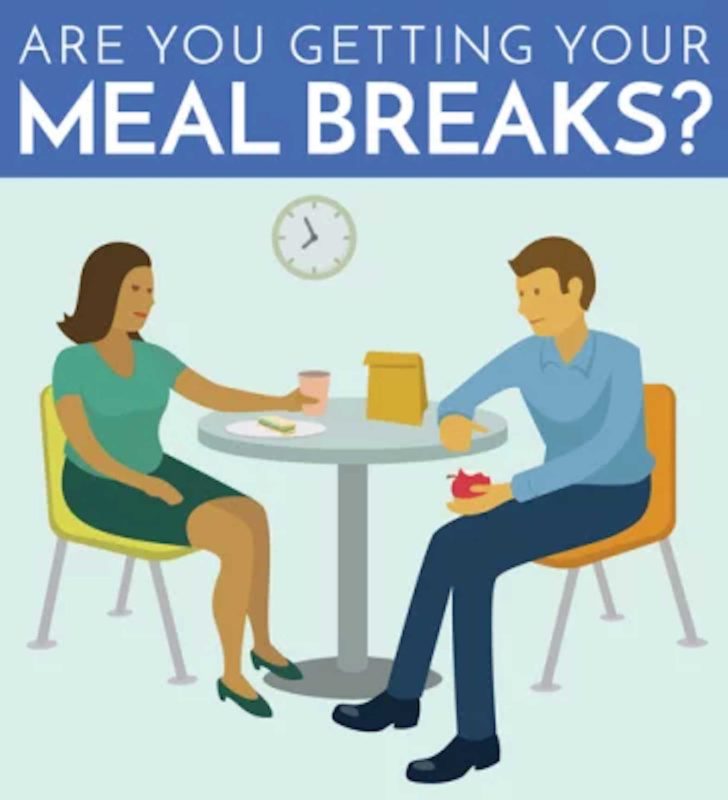How are payments for missed meal or rest breaks computed?

For two years, Jessica Ferra worked as a bartender for Loews Hollywood Hotel, LLC. Loews paid Ferra hourly wages as well as quarterly nondiscretionary incentive payments, which refer to payments for an employee’s work that are owed to employees based on a prior agreement or promise and dependent on the sole discretion of the employer. (An example of a nondiscretionary incentive payment would be a performance bonus.)
Under California law, employers must provide their nonexempt hourly employees with meal and rest periods during the workday. The meal break obligation is met if the employer “relieves its employees of all duty, relinquishes control over their activities and permits them a reasonable opportunity to take an uninterrupted 30-minute break, and does not impede or discourage them from doing so.”
Under the law, meal break violations can occur if the employee 1) was not provided an actual break; 2) was prevented from taking the break within the first 5 hours of work; 3) was interrupted by work during break; or 4) took a shortened break. If any of these violations occur, the employee is considered to have not been provided a meal period and must be paid additional compensation.
As to rest breaks, an employer must authorize and permit all employees to take at least 10-minute rest breaks, for work of every four (4) hours or major fraction thereof. The ten minutes must be consecutive, and the rest period must be “duty-free.”
Loews’ hourly employees who are not provided with a meal or rest period are paid an additional hour of pay based on the employee’s hourly wage. If the employee earned any nondiscretionary payments in addition to an hourly wage, like Ferra’s quarterly incentive payments, Loews did not include these payments into the calculation of premium pay for missed meal and rest periods owed under the law.
Ferra filed a class action case against Loews, alleging that Loews failed to properly pay its employees for missed meal and rest breaks because Loews omitted the nondiscretionary incentive payments from its calculation of premium pay and instead used only their base pay. Ferra argued that the law mandates employers to pay the “regular rate of compensation” for noncompliant breaks. This meant that the computation of the “regular rate of compensation” should have included other types of pay, similar to when computing the overtime rate for overtime work.
The case reached the California Supreme Court. They first noted that under California law, “If an employer fails to provide an employee a meal or rest or recovery period in accordance with a state law . . . the employer shall pay the employee one additional hour of pay at the employee’s regular rate of compensation for each workday that the meal or rest or recovery period is not provided.”
The high Court began its analysis by first affirming that under California law, employers must provide employees with overtime pay when employees work more than a certain amount of time. To calculate overtime pay, the law requires an employer to compensate an employee by a multiple of the employee’s “regular rate of pay.” California law also provides for meal, rest, and recovery periods. If an employer does not provide an employee with a compliant meal, rest, or recovery period, the law requires the employer to “pay the employee one additional hour of pay at the employee’s regular rate of compensation.”
After examining in detail the legislative history of the law on wages, the high Court concluded that the term “regular rate” refers not only to hourly wages but also to nondiscretionary payments. The term “regular rate of pay” has the same meaning as “regular rate.” In the same vein, the court examined the phrase “regular rate of compensation” in the context of premium pay for a noncompliant meal, rest, or recovery period. It concluded that the term “regular rate of compensation” has the same meaning as “regular rate of pay” and includes not only hourly wages but all nondiscretionary payments for work performed by the employee. This interpretation is consistent with the remedial purpose of the Labor Code and wage orders and with the court’s general guidance that the “state’s labor laws are to be liberally construed in favor of worker protection.”
The Supreme Court also ruled that its decision in this case applies retroactively.
The Law Offices of C. Joe Sayas, Jr. welcomes inquiries about this topic. All inquiries are confidential and at no-cost. You can contact the office at (818) 291-0088 or visit www.joesayaslaw.com. [For more than 25 years, C. Joe Sayas, Jr., Esq. successfully recovered wages and other monetary damages for thousands of employees and consumers. He was named Top Labor & Employment Attorney in California by the Daily Journal, consistently selected as Super Lawyer by the Los Angeles Magazine, and is a past Presidential Awardee for Outstanding Filipino Overseas.]

